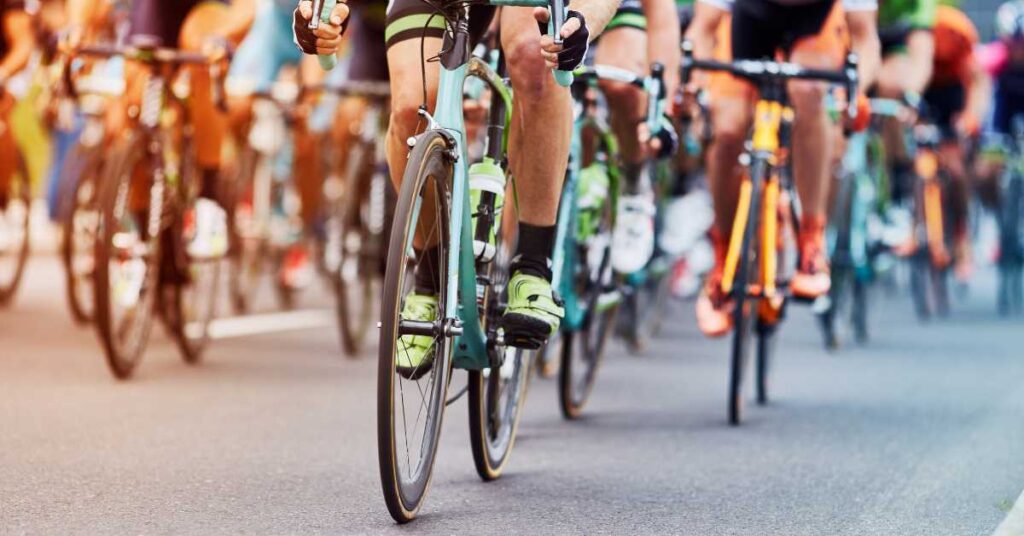Introduction
Engaging in long-distance activities, such as running, cycling, or hiking, requires proper fueling and hydration to sustain optimal performance. Hydration plays a critical role in endurance activities, as dehydration can lead to fatigue, decreased performance, and even potential health risks.
In this article, we will explore the importance of hydration in endurance activities, discuss effective hydration strategies before, during, and after the event, and provide insights on developing a personalized hydration plan. Get ready to quench your thirst for knowledge and fuel your body for long-distance success!
Understanding Hydration and Its Impact on Performance
The Role of Water in the Body
Water is a fundamental component of our bodies, accounting for a significant percentage of our total weight. It is involved in vital functions such as regulating body temperature, lubricating joints, and aiding in digestion.
During endurance activities, water acts as a transportation system, delivering nutrients to working muscles and facilitating waste removal.
The Consequences of Dehydration during Endurance Activities
Dehydration can have severe consequences on performance during long-distance activities. Even a minor level of dehydration can result in decreased endurance, impaired thermoregulation, muscle cramps, and increased heart rate.
These factors can significantly hinder performance and negatively impact overall enjoyment and safety during endurance events.
Hydration Strategies for Long-Distance Activities
Pre-Event Hydration
Proper hydration should begin well before the start of an endurance activity. In the days leading up to the event, focus on maintaining consistent hydration levels by drinking water regularly.
On the day of the activity, consume 16 to 20 ounces (about 500 to 600 milliliters) of water 2 to 3 hours before the start to ensure adequate hydration and allow time for proper absorption.
Hydration During the Activity
During the endurance activity, it’s crucial to maintain hydration to avoid dehydration and its negative effects. Aim to drink fluids regularly, consuming approximately 7 to 10 ounces (200 to 300 milliliters) every 10 to 20 minutes.
Depending on the duration and intensity of the activity, consider incorporating sports drinks or electrolyte-enhanced beverages to replenish both fluids and electrolytes lost through sweat.
Rehydration Post-Activity
Rehydrating after a long-distance activity is essential to restore fluid balance and aid in recovery. Aim to consume fluids within the first 30 minutes to 1 hour post-activity. Water, sports drinks, or electrolyte-rich beverages can all be effective options for replenishing fluids and electrolytes.
Electrolytes: The Key to Sustaining Hydration
Understanding Electrolyte Balance
Electrolytes are minerals that carry an electrical charge in the body and play a crucial role in maintaining fluid balance and supporting various physiological processes. Sodium, potassium, and magnesium are particularly important electrolytes involved in hydration during endurance activities.
The Role of Sodium, Potassium, and Magnesium
Sodium is the primary electrolyte lost through sweat and plays a significant role in maintaining fluid balance. Potassium is essential for proper muscle function and helps prevent muscle cramps.
Magnesium is involved in energy production and muscle relaxation. Ensuring an adequate intake of these electrolytes is vital for sustaining hydration and optimal performance during long-distance activities.
Hydration Methods: Water vs. Sports Drinks
Benefits of Water for Endurance Hydration
Water is the simplest and most accessible form of hydration. It is effective at replenishing fluid losses and is generally safe for consumption. Water is suitable for shorter-duration activities or when additional electrolyte replenishment may not be necessary.
The Advantages of Sports Drinks for Extended Activities
Sports drinks can be advantageous for long-distance activities lasting over an hour or in challenging environmental conditions. They provide a source of carbohydrates for sustained energy and electrolytes to replenish those lost through sweat. Sports drinks can enhance endurance and aid in maintaining fluid-electrolyte balance during prolonged efforts.
Developing a Personalized Hydration Plan
Determining Fluid Needs Based on Body Weight and Sweat Rate
To develop an effective hydration plan, it’s essential to consider individual factors such as body weight and sweat rate. Monitoring body weight before and after training sessions can help estimate fluid losses. As a general guideline, aim to consume 16 to 24 ounces (about 500 to 750 milliliters) of fluid per pound (0.5 to 1 liter per kilogram) of body weight lost during activity.
Experimenting with Hydration Strategies during Training
Training provides an opportunity to experiment with different hydration strategies and determine what works best for your body. Test different fluid intake schedules, types of beverages, and electrolyte replenishment methods during your training sessions. Pay attention to your performance, energy levels, and overall comfort to fine-tune your personalized hydration plan.
Signs of Dehydration and Overhydration
Recognizing the Symptoms of Dehydration
It’s crucial to be aware of the signs of dehydration during long-distance activities. Symptoms may include increased thirst, dry mouth, darker urine color, fatigue, dizziness, muscle cramps, and reduced performance. Recognizing these signs early allows you to take immediate action to prevent further dehydration.
Understanding the Risks of Overhydration
While dehydration is a significant concern, overhydration can also pose risks, particularly in endurance events. Drinking excessive amounts of fluids without considering electrolyte balance can dilute the body’s sodium levels, leading to a condition known as hyponatremia. Symptoms of hyponatremia include nausea, headache, confusion, and in severe cases, seizures or loss of consciousness.
Hydration and Nutrition: The Power of Proper Fueling
The Importance of Carbohydrates and Electrolytes
In addition to hydration, proper nutrition is essential for endurance activities. Carbohydrates are a primary source of fuel for long-distance efforts, providing the energy needed to sustain performance.
Consuming carbohydrate-rich foods or beverages before and during the activity helps maintain blood sugar levels and delay fatigue. Electrolytes, along with carbohydrates, support hydration and optimal muscle function.
Preparing Hydration and Nutrition for Race Day
Race day requires careful planning to ensure proper hydration and nutrition. Develop a race-day strategy that includes pre-event hydration, fueling with carbohydrates, and maintaining hydration during the race.
Consider factors such as the duration of the event, environmental conditions, and personal preferences to create a plan that optimizes your performance and minimizes the risk of dehydration or overhydration.
Conclusion
Hydration is a vital component of success in long-distance activities. Proper hydration before, during, and after endurance events is crucial for maintaining performance, preventing dehydration, and supporting overall well-being.
Develop a personalized hydration plan that considers factors such as body weight, sweat rate, environmental conditions, and individual preferences. By fueling your body with the right fluids and electrolytes, you’ll be ready to conquer your long-distance goals and enjoy the journey along the way.
Frequently Asked Questions (FAQs)
Q1: Should I drink water or sports drinks during a marathon or long-distance race?
A1: The choice between water and sports drinks depends on various factors, including the duration of the race and your individual hydration needs. For shorter races, water may be sufficient, while sports drinks can provide additional benefits for prolonged efforts by replenishing electrolytes and providing carbohydrates for sustained energy.
Q2: Can I rely on thirst as an indicator of when to drink during an endurance activity?
A2: Relying solely on thirst may not be sufficient, as thirst is not always an accurate indicator of hydration needs. It’s important to hydrate regularly according to a schedule, even if you don’t feel thirsty. Monitor your fluid intake and consider environmental conditions to ensure adequate hydration.
Q3: How can I determine my sweat rate?
A3: To estimate your sweat rate, weigh yourself before and after a training session or race. The weight lost during the activity represents fluid loss through sweat. By comparing your pre- and post-activity weights, you can calculate your approximate sweat rate and adjust your hydration strategy accordingly.
Q4: Can I hydrate with foods instead of beverages during long-distance activities?
A4: While hydrating foods like fruits and vegetables have high water content and can contribute to overall hydration, relying solely on food for hydration during long-distance activities may not provide sufficient fluid intake. It’s essential to consume fluids in addition to hydrating foods to maintain proper hydration levels.
Q5: Are there any hydration guidelines for multi-day endurance events?
A5: Multi-day endurance events require careful hydration planning. In addition to maintaining hydration during each day’s activity, focus on proper rehydration and recovery between stages. Consider electrolyte-rich beverages, balanced nutrition, and adequate rest to support your body’s hydration and recovery needs throughout the event.
Disclaimer: When it comes to sport nutrition, always seek professional guidance and advice from medical professionals, nutritionists and other relevant professionals who will be in a position to better address specific concerns or issues related to your individual situation. In no event shall we be liable for any direct, indirect, incidental, special, or consequential damages arising out of or in connection with your use of this website or the content provided herein.







